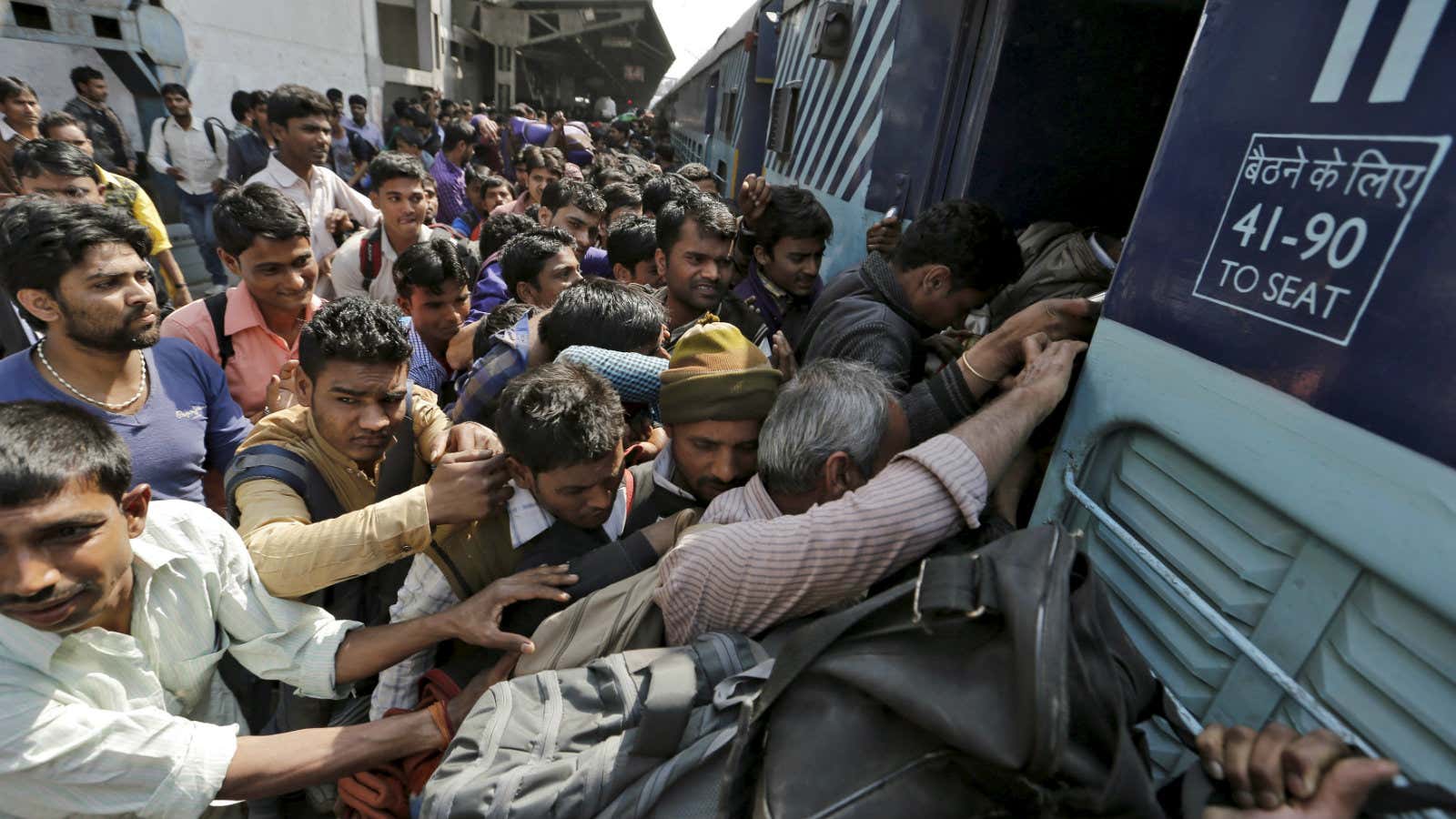One of the world’s largest employers is now looking for even more recruits.
Indian Railways, which administers the country’s sprawling railway network, already has over 1.2 million people on its payroll. But this week, railway minister Piyush Goyal announced it will recruit another 230,000 over the next two years.
At the moment, Indian Railways has about 131,428 posts lying vacant for which no recruitment is currently ongoing, according to a statement from the ministry. Besides, around 99,000 current employees are also expected to retire between 2019 and 2021, creating the need for more new employees.
In the first phase of recruitment, planned for February-March, the railways will hire 131,328 people, out of which 10% of the posts will be reserved for “economically weaker sections” according to the constitutional amendment recently passed by the Narendra Modi government. Thousands of jobs will also be reserved for scheduled caste, scheduled tribe, and other backward caste candidates as usual.
The news comes amid worries of jobless growth haunting India, the world’s fastest-growing major economy. India’s employment rate declined to 40.6% in March 2018 from 43.5% in January 2016, according to a report by the credit ratings agency CARE. In the run up to the country’s national elections, expected in the coming months, the Modi government is facing heavy criticism for not doing enough to address the problem. Especially since it came to power by promising more jobs.
Railway jobs are especially coveted in India for their security, steady pay, and other perks, such as housing. As a result, demand often vastly exceeds supply. Last year, after the Indian Railways advertised for 90,000 vacancies, it received a staggering 23 million applications. And this, experts say, is a sign of the troubling lack of enough jobs in India’s private sector.
